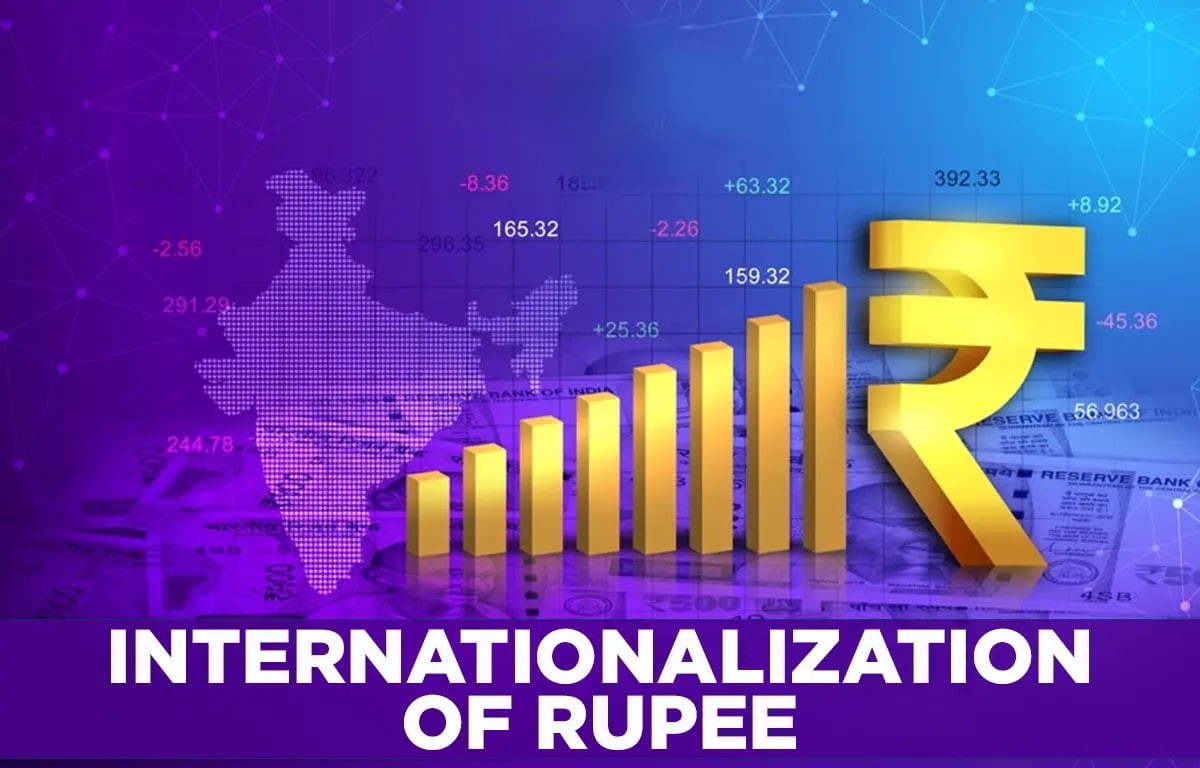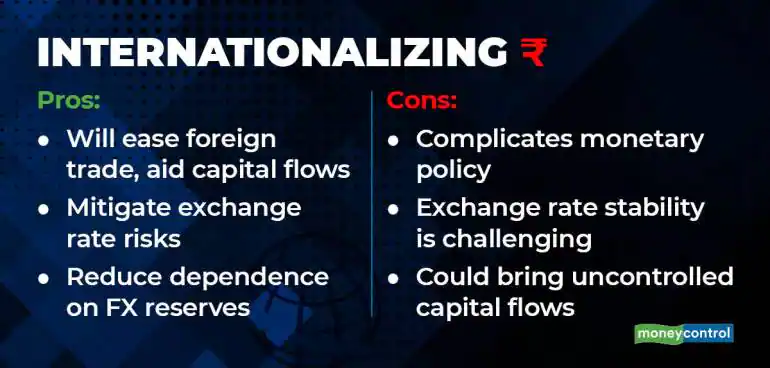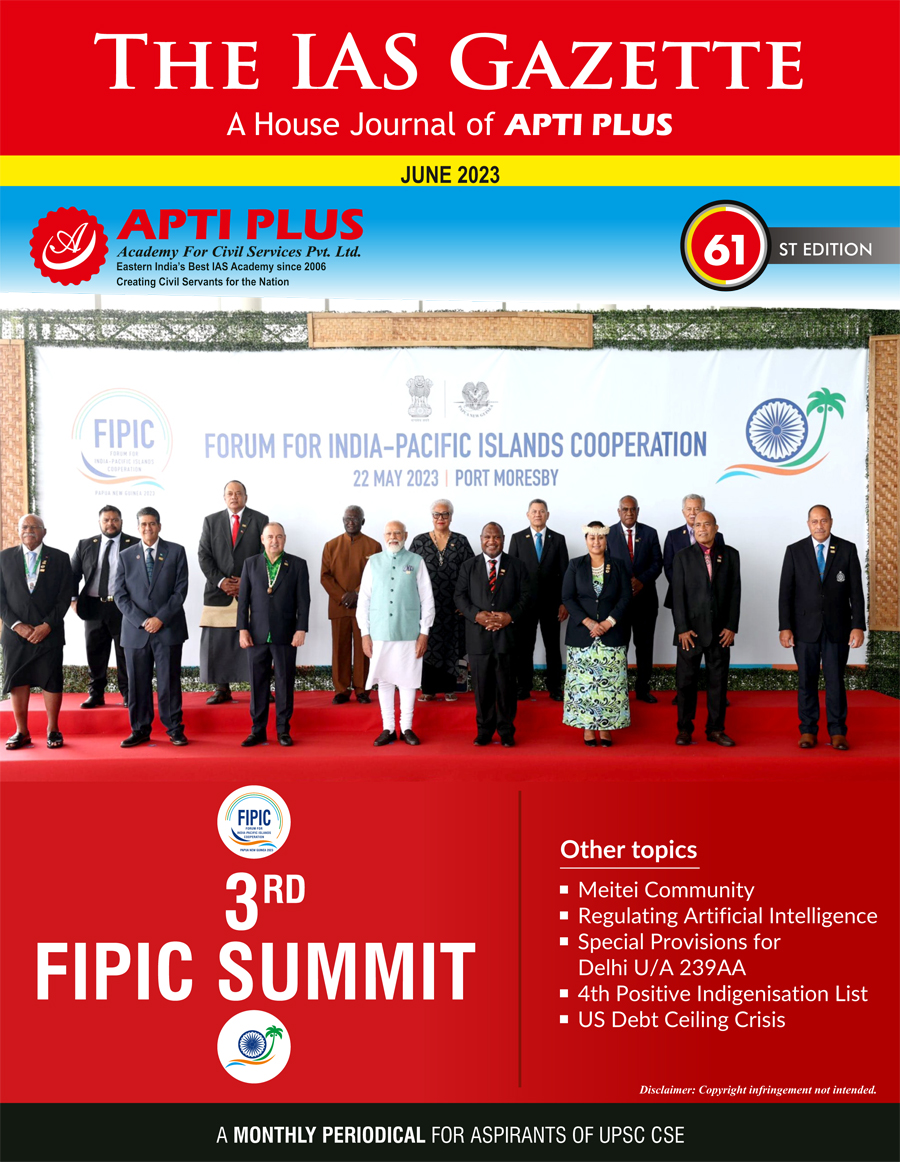Description

Copyright infringement not intended
Context: As the Government of India pursues its goal of making the Indian Rupee (INR) a global currency, a report by an Inter-Departmental Group (IDG) of the Reserve Bank of India (RBI) has warned that internationalization could lead to potential fluctuations in the rupee’s value in the early stages.
Details
Highlights of the Inter-Departmental Group (IDG) Report
- IDG explained that “the challenge is that a country may have to compromise its domestic monetary policies to meet the worldwide demand for its currency, which is known as the Triffin dilemma”.
- It said that the internationalization of a currency could amplify an external shock, as funds can flow more freely across borders and currencies.
- The IDG noted that costs arise from the increased demand for money and the volatility of that demand. It said that most central banks can distinguish between domestic and foreign demand for money, but some components, such as cash, are still uncertain.
However, the group believed that the benefits of internationalization outweighed the costs. These benefits include reduced exchange rate risk, lower cost of capital due to better access to international financial markets, high seigniorage benefits and lower need for foreign exchange reserves.
|
Triffin dilemma
- The Triffin dilemma or Triffin paradox is the conflict of economic interests that arises between short-term domestic and long-term international objectives for countries whose currencies serve as global reserve currencies.
- This dilemma was first identified by the economist Robert Triffin in the 1960s, who pointed out that a country that issues a global reserve currency must be willing to supply enough liquidity to the rest of the world, but at the same time maintain confidence in its currency.
-
- If the country tries to pursue domestic policy goals, such as full employment or price stability, it may create excess demand for its currency and cause inflation or a loss of competitiveness.
- On the other hand, if the country tries to maintain the value of its currency and avoid external imbalances, it may restrict the availability of its currency to the global market and cause deflation or a shortage of liquidity.
- The Triffin dilemma implies that there is a trade-off between the national and international roles of a reserve currency and that no single currency can perform both functions optimally.
|
Internationalisation of Rupee
About
- The internationalisation of the rupee is the process of increasing the use of Indian currency in global trade and finance.
- It involves making the rupee convertible, acceptable and attractive for international transactions.
Background
- The idea of internationalising the rupee is not new. It was first proposed by the Reserve Bank of India (RBI) in 1970, but it did not gain much traction due to various economic and political factors. However, in recent years, the issue has gained renewed interest and momentum, especially after the global financial crisis of 2008-09, which exposed the vulnerabilities of relying on a few dominant currencies like the US dollar and the euro.
- The RBI has taken several steps to facilitate the internationalisation of the rupee, such as allowing Indian companies to issue rupee-denominated bonds (masala bonds) overseas, permitting foreign investors to invest in rupee-denominated debt instruments (fully accessible route), and signing currency swap agreements with various countries.
- The government has also supported this process by launching initiatives like the International Financial Services Centre (IFSC) in Gujarat, which aims to provide a platform for offshore financial activities in rupees.

The internationalization of the rupee may have three main features:
Convertibility
- This means that the rupee can be freely exchanged for other currencies without any restrictions or controls by the authorities. Convertibility can be partial or full, depending on the extent of liberalisation of the capital account.
- Currently, India has a partial convertibility regime, where the current account transactions are fully convertible, but the capital account transactions are subject to various regulations and limits.
Acceptability
- This means that the rupee is widely used and accepted by other countries and entities for trade and financial transactions. Acceptability depends on several factors like the size and stability of the Indian economy, the depth and liquidity of the domestic financial markets, the credibility and independence of the monetary policy, and the strength and resilience of the banking system.
Attractiveness
- This means that the rupee is preferred by other countries and entities over other currencies for trade and financial transactions. Attractiveness depends on several factors like the competitiveness and diversity of Indian exports, the availability and cost of hedging instruments, the level and volatility of inflation and exchange rates, and the legal and institutional framework for dispute resolution and enforcement.
Arguments in favour of internationalisation are:
- It would reduce the dependence on foreign currencies for trade and investment, thereby lowering the exchange rate risk and transaction costs for Indian businesses and consumers.
- It would enhance India's economic and strategic influence in the region and beyond, as more countries would accept and hold the rupee as a medium of exchange and store of value.
- It would diversify the sources of foreign exchange reserves and provide more flexibility for monetary policy management.
- It would foster the development of domestic financial markets and institutions, as more demand for rupee-denominated assets would increase their depth and liquidity.
Implications for India
- Exposing the Indian economy to greater external shocks and volatility, as changes in global market conditions and sentiments can affect the demand and supply of rupees.
- Reducing the policy autonomy and flexibility of the RBI, as it has to balance between maintaining price stability, exchange rate stability and financial stability in a more open capital account regime.
- Increasing the responsibility and accountability of the government, as it has to pursue sound fiscal policies, structural reforms and good governance to maintain credibility and confidence among foreign stakeholders.
- Creating more challenges and opportunities for the domestic financial sector players, as they have to compete with global players in terms of innovation, efficiency and regulation.
Positive impact
- Internationalisation could lead to higher economic growth, lower inflation, more stable exchange rates, higher foreign exchange reserves, deeper and more liquid financial markets, more efficient allocation of resources, more innovation and diversification etc.
Negative impact
- Internationalisation could lead to higher exchange rate volatility, loss of monetary policy autonomy, higher exposure to external shocks, higher financial sector risks, more speculative capital flows, more fiscal pressure, more inequality and social unrest etc.
Internationalisation of the rupee can have several benefits for India
- Reducing the currency risk and transaction costs for Indian exporters and importers, who can invoice and settle their trade in rupees instead of foreign currencies.
- Enhancing the access and diversification of sources of finance for Indian companies and government, who can borrow and raise funds in rupees from overseas markets.
- Increasing the role and influence of India in global economic affairs, especially in regional forums like SAARC, ASEAN and BRICS, where India can promote greater use of rupees for trade and investment.
- Strengthening the confidence and trust in the Indian economy and financial system among foreign investors and partners, who can hold more rupee assets as part of their portfolios.
- Supporting the domestic financial sector development by creating more demand and liquidity for rupee-denominated instruments and services.

Challenges
- The low share of India in global trade and finance limits the demand for rupees in international markets.
- The high dependence of India on oil imports (about 80%) increases its vulnerability to oil price shocks and exchange rate fluctuations.
- The persistent current account deficit (about 2% of GDP) reflects a structural imbalance between savings and investment in India.
- The high fiscal deficit (about 7% of GDP) and public debt (about 90% of GDP) constrain the fiscal space and credibility of the government.
- The low financial inclusion (about 80% of adults have bank accounts) and literacy (about 24% of adults are financially literate) hamper the financial sector development and participation in India.
Domestic challenges
- India needs to address its structural and institutional weaknesses that hamper its economic potential and financial stability. These include improving its fiscal discipline, reducing its public debt, reforming its tax system, enhancing its infrastructure, strengthening its governance, fighting corruption, improving its ease of doing business etc.
External challenges
- India needs to cope with the uncertainties and risks that arise from the global economic and geopolitical environment. These include dealing with the US-China trade war, the COVID-19 pandemic, the climate change crisis, regional conflicts and tensions etc.
Market challenges
- India needs to overcome the inertia and resistance that exist in international trade and financial markets. These include convincing its trading partners and investors to accept and use the rupee, competing with other emerging market currencies that are also vying for internationalisation, complying with the global standards and norms for transparency and accountability etc.
The internationalisation of the rupee is a long-term and gradual process, which requires a holistic and coordinated approach by the government, the RBI and the private sector.
Some of the possible steps that can be taken to facilitate this process are:
- Enhancing the competitiveness and diversity of Indian exports, especially in sectors like services, IT, pharmaceuticals, engineering and textiles, which have high-value addition and demand potential.
- Reducing the dependence on oil imports, by promoting energy efficiency, renewable energy and domestic production.
- Improving the current account balance, by boosting domestic savings, attracting more foreign direct investment and remittances, and curbing gold imports.
- Consolidating the fiscal position, by rationalising subsidies, widening the tax base, improving tax compliance and expenditure management, and implementing fiscal rules and targets.
- Deepening the financial sector development, by expanding the financial inclusion and literacy, strengthening the banking system and regulation, developing the bond and derivatives markets, and fostering innovation and competition.
- Building the institutional and legal framework, by harmonising the standards and practices with international norms, enhancing the dispute resolution and enforcement mechanisms, and ensuring transparency and accountability.
Short-term steps
- India should continue to implement the existing measures and initiatives that promote the use of the rupee in cross-border transactions. These include expanding the rupee payment mechanism for oil imports from Iran and other countries, encouraging more bilateral and multilateral swap arrangements involving the rupee, facilitating more issuance of masala bonds (rupee-denominated bonds issued overseas) by Indian entities etc.
Medium-term Steps
- India should pursue more reforms and liberalisation that enhance its economic competitiveness and financial resilience. These include further opening up its capital account, developing its bond market, deepening its currency market, strengthening its banking sector, improving its credit rating etc.
Long-term steps
- India should aspire for more integration and cooperation with the global economy and community. These include seeking inclusion of the rupee in the IMF's SDR basket, joining the CLS system for cross-border settlement of currencies, participating in global payment systems like SWIFT (Society for Worldwide Interbank Financial Telecommunication) etc.
Measures Suggested by RBI
- The inclusion of the rupee in the Special Drawing Rights (SDR) basket of the International Monetary Fund (IMF) would increase the demand and acceptability of the rupee as a reserve currency.
- Recalibration of the foreign portfolio investor (FPI) regime would allow more foreign investors to access the Indian bond market and increase the depth and liquidity of the market.
- Rationalization of the tax regime for masala bonds, which are rupee-denominated bonds issued overseas by Indian entities. This would reduce the cost and increase the attractiveness of these bonds for both issuers and investors.
- Integration of the Indian payment systems with other countries would facilitate cross-border trade and remittances in rupees and reduce transaction costs and risks.
- Allowing Indian banks to offer banking services in rupees outside India would expand the network and reach of the rupee and support its use by non-residents.

Conclusion
- The internationalisation of the rupee is a desirable and achievable goal for India, which can enhance its economic growth, stability and influence in the world. However, it requires a sustained and concerted effort by all stakeholders to overcome the challenges and seize the opportunities. It is not a destination, but a journey.
Must-Read Articles:
RUPEE TRADE ARRANGEMENT: https://www.thehindu.com/business/Economy/internationalisation-of-rupee-poses-challenge-of-excess-exchange-rate-volatility-says-rbi-group/article67046102.ece
|
PRACTICE QUESTION
Q. What is the meaning of the internationalization of the rupee?
1. Allowing the rupee to be used as a reserve currency by other countries.
2. Allowing the rupee to be freely convertible into any foreign currency.
3. Allowing the rupee to be used for trade and investment transactions across borders.
4. Allowing the rupee to be pegged to a basket of currencies.
How many of the above statements is/are correct?
A) Only 1
B) Only 2
C) Only 3
D) All
Answer: A
Explanation: The internationalization of the rupee means that the rupee can be used as a medium of exchange and store of value for transactions involving goods, services, assets and liabilities across countries.
|
|
PRACTICE QUESTION
Q. What is the current status of the convertibility of the rupee?
1. Rupee is fully convertible on both current and capital accounts.
2. Rupee is fully convertible on the current account but partially convertible on the capital account.
3. Rupee is partially convertible on both current and capital accounts.
4. Rupee is not convertible to either a current or capital account.
How many of the above statements is/are correct?
A) Only 1
B) Only 2
C) Only 3
D) All
Answer: A
Explanation: Rupee is fully convertible on the current account but partially convertible on the capital account
Convertibility of the rupee means that the rupee can be exchanged for any foreign currency without any restrictions or controls by the government or central bank. India has achieved full convertibility of the rupee on the current account, which covers transactions related to trade, travel, remittances, etc., since 1994. However, India still imposes some limits and regulations on the convertibility of the rupee on capital accounts, which covers transactions related to investments, loans, assets, etc.
|
https://epaper.thehindu.com/ccidist-ws/th/th_delhi/issues/42473/OPS/GMNBESEUP.1.png?cropFromPage=true














